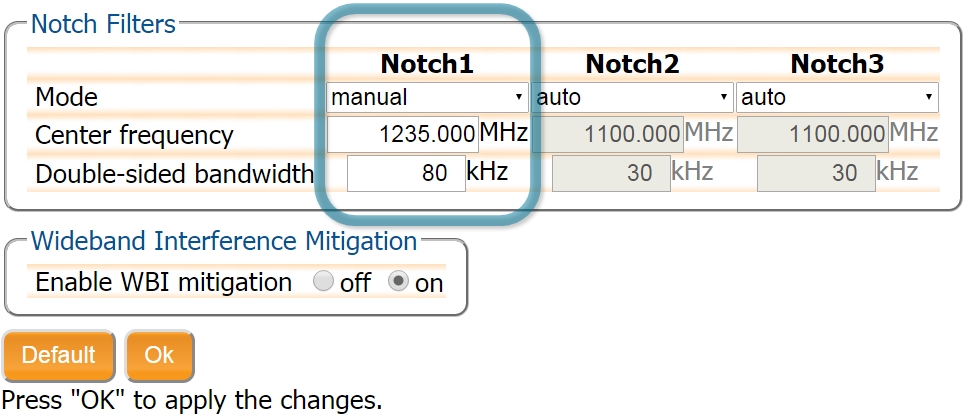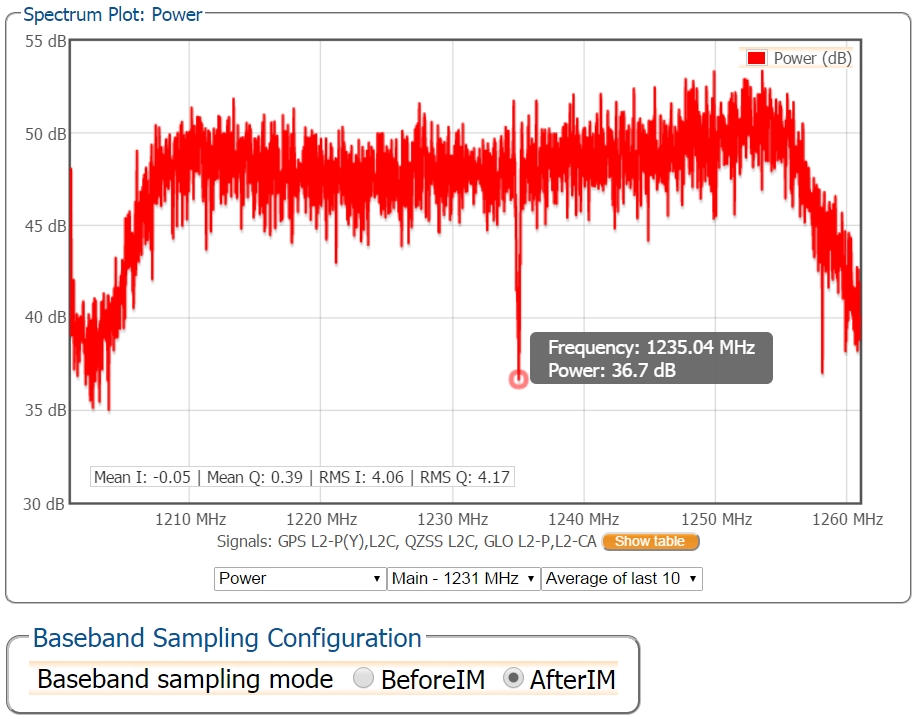AIM+: Using the spectrum analyser to detect and mitigate interference
Septentrio has developed a sophisticated RF interference monitoring and mitigation system (AIM+). To mitigate the effects of narrow-band interference, 3 notch filters can be configured either in auto or manual mode. These notch filters effectively remove a narrow part of the RF spectrum around the interfering signal. The L2 band, being open for use by radio amateurs, is particularly vulnerable to this type of interference. The effects of wideband interference, both intentional and unintentional, can be mitigated by enabling the WBI mitigation system. The WBI system also reduces, more effectively than traditionally used pulse-blanking methods, the effects of pulsed interferers.
The spectrum view plot
In the Spectrum window of the GNSS menu, you can monitor the RF spectrum and configure three separate notch filters to cancel out narrowband interference. Figure 1 shows the L2 frequency band with the GPS L2P signal at 1227.60 MHz indicated. Different bands can be viewed by clicking on the ‘Show table’ button as shown. The spectrum is computed from baseband samples taken at the output of the receiver’s analog to digital converters.
 Figure 1: The RF spectrum of the L2 Band
Figure 1: The RF spectrum of the L2 Band
Configuring the notch filters
In the default auto mode of the notch filters, the receiver performs automatic interference mitigation of the region of the spectrum affected by interference. In manual mode, as shown configured for Notch1 in Figure 2, the region of affected spectrum is specified by a centre frequency and a bandwidth which is effectively blanked by the notch filter.
 Figure 2: Configuring the first notch filter Notch1 at 1235 MHz
Figure 2: Configuring the first notch filter Notch1 at 1235 MHz
With the Notch1 settings as shown in Figure 2, the L2-band after the notch filter (After IM) is shown in Figure 3 with the blanked section clearly visible.
 Figure 3: The RF spectrum of the L2 Band after applying the notch filter at 1235 MHz
Figure 3: The RF spectrum of the L2 Band after applying the notch filter at 1235 MHz
Wideband interference mitigation
Wideband interference of GNSS signals can be caused unintentionally by military and civilian ranging and communication devices. There are also intentional sources of interference from devices such as chirp jammers. The wideband interference mitigation system (WBI) can reduce the effect of both types of interference on GNSS signals.
